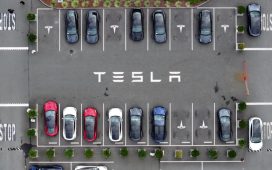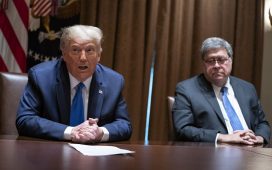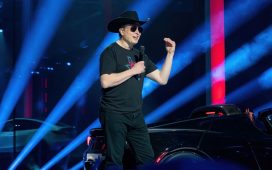More upheaval looms as the company continues to adjust to an EV future, Rowley told Automotive News Europe Associate Publisher and Editor Luca Ciferri and Correspondent Nick Gibbs. Here are edited excerpts.
Q: Ford was the first major manufacturer in Europe to say it was going to have an all-electric passenger-car range by 2030. You will use Volkswagen Group’s MEB platform for one, possibly two, electric cars. What is your platform strategy to expand your range further?
A: I’m not giving details now. You know, 2030 was an important date we put out there. But I think even more important is that by mid-2026 all our passenger vehicles will be zero-emissions capable, either all electric or plug-in hybrid. In terms of platforms, we have a number of tools in the toolbox. The VW alliance is a very important one with the first EV coming out of Cologne in 2023, and we have the opportunity to add a second vehicle. Additionally, we are launching the Mustang Mach-E in Europe, and that is built on a global Ford platform. That platform is optimized for North America and is slightly larger, whereas MEB gives us access to a platform that is designed with Europe front and center in mind. So, it’s very appropriate for mainstream products.
Does your more targeted portfolio of highly differentiated passenger vehicles move Ford’s center of gravity?
We see where customer demand is going. Europe has been later than North America in shifting to utility vehicles (SUVs). But if you look at the segmentation now, small-utility segments are growing. We want to put our capital in the growing parts of the market. That is why we brought the Puma to market. But we are very aware that what is happening today will not always be.
Does that mean fewer passenger vehicles?
If I take a step back, the core of our business in Europe and our profitability is commercial vehicles. We are the No. 1-selling brand. The alliance with VW gives us the industrial scale that allows us to take our commercial-vehicle business to the next level. So that’s where I start. Our passenger-vehicle business has been more challenged. To transform that we have restructured, resulting in fewer jobs, and we will choose segments where there is consumer demand, growth and where we can be profitable. We will not necessarily try to be all things to all men or women in the future. We will put our capital where we can differentiate.
With the MEB cars, are you going to follow VW, which started with the compact hatchback then added an SUV?
We have probably got the benefit of being a bit more selective than Volkswagen. When we bring that to market you will be very excited to see what it is.
Are you done shutting plants?
As we transition, there are going to be fewer powertrain plants, equally, we may invest in electric components. Our restructuring program has been very significant, affecting about 20 percent of our work force. We reduced our structural cost by more than $1 billion. The next phase of the transformation, however, is going to require further action that could mean rescaling or repurposing facilities or other changes. We will size our industrial footprint to make sure it is consistent with our product portfolio.You mentioned investing in electrified components. Ford CEO Jim Farley says building cells is a possibility. What EV product could you make in Europe?
The most challenging thing is picking our way through as ICE (internal combustion engine) volumes decline and EV volumes ramp up. Historically, we haven’t been in the battery cell business. However, we need to decide whether we want to be in a full cell relationship or whether we want to partner with other companies. There are also components such as e-transaxles. We built e-transaxles in America for the Mach-E. They are going to go into the electrified Transit. We have a point of view on some of those [e-components] while others still need to be worked through. We are a volume player in Europe so having a localized production base helps us be competitive.
Are battery cells from VW part of the deal or will they come from another supplier?
We will purchase the battery pack as part of the agreement with Volkswagen.
Your plant in Dagenham, England, makes diesels. What could you make there to adapt the factory to the electrified age?
We built three diesel engines there. The majority of those are going into commercial vehicles, primarily the Transit, so that gives a longer runway. When you look a decade out, we will still be selling a lot of diesel engines from Dagenham. It is still a very important part of our future commercial-vehicle business.







